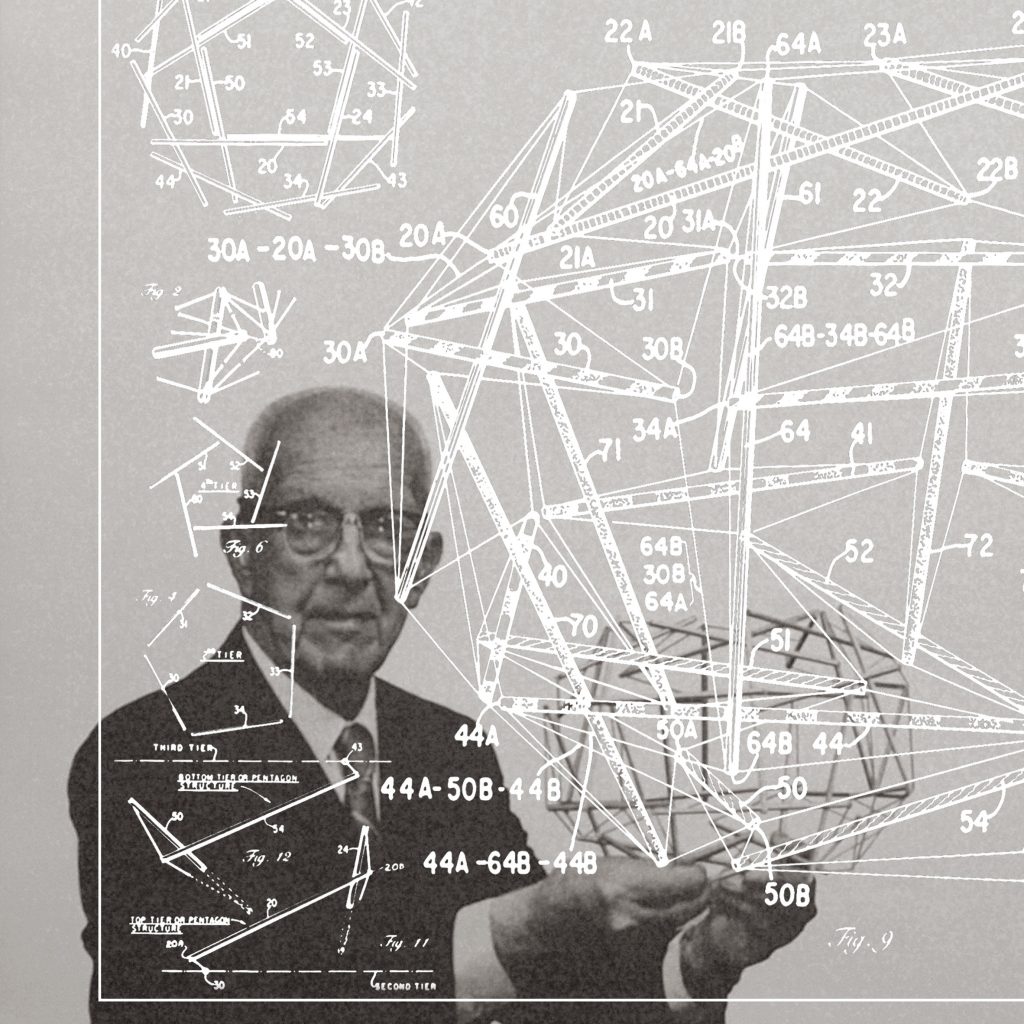


In the 1950s, his investigations into tensegrity and his obsessive study of geometric laws converged in his most successful project, which was to represent the United States at the 1967 Universal Exhibition, becoming an iconic image of the future for decades to come – the geodesic dome, the greatest area that can be covered with the least amount of material and which can support itself without the need for foundations. In his approach to visualisation, Fuller applied geometry, giving rise to another of his key concepts – “tensegrity”, a structural principle that combines “tension” and “integrity”. He saw the universe as a “synergy-of-synergies”, complete systems that cannot be predicted by observing its part separately, as “there is nothing that one does that does not affect all others to a varying extent. The foundations of Fuller’s philosophy include the idea of ‘ synergy’. A hundred years later, access to affordable and sustainable housing is still a challenge for the world’s big cities. That’s where it all began for him, changing society. His main concerns focused on housing and cars, resulting in his revolutionary Dymaxion House and Dymaxion Car. His mission: “To make the world work for 100% of humanity in the shortest possible time through spontaneous cooperation without ecological offense or the disadvantage of anyone.” An innate ability that combines intuition, imagination and experience.įuller experimented tirelessly throughout his life, defining himself as a kind of scientific designer – actually a “comprehensive anticipatory design scientist” – and vice-versa. He saw experimentation as the way to the knowledge which we have all used since we were born and which guide us in the advances we make as individual and as a society. Fuller’s starting point was this powerful idea.
#RICHARD BUCKMINSTER FULLER SERIES#
In the Orbit of Buckminster Fuller’, which is free to visit on the third floor of Espacio Fundación Telefónica until 14 March 2021, examines Fuller from the perspective of the reality of 2020, at a confused and uncertain time in which we are experiencing a series of the systemic crises that Fuller considered for over sixty years.Įven though we are not experts, we are all capable of doing incredible things. The exhibition brings together Fuller’s main work and the ideas of his creative contemporaries, such as the architects Abeer Seikaly, Norman Foster and Chuck Hoberman, the designers Neri Oxman and Joris Laarman and the artists Olafur Eliasson, Ruth Asawa and Tomáš Libertíny, all of whom followed in Fuller’s footsteps and developed his ideas in their various fields. With this exhibition, commissioned by Rosa Pera and José Luis de Vicente, we take a new look at his ideas, his concerns and processes, reassessing the value of his legacy, which today remains as valid as it ever was. Through his thinking, he was able to anticipate some of the major crises of the 20 th century surprisingly accurately.Ī virtually unclassifiable visionary and investigator, Fuller created a seemingly never-ending body of work that crossed over disciplines such as architecture, engineering, philosophy and education, through a vision of design that was capable of changing the world.From questions of mobility and housing to education and the use of big data, his thinking included a number of questions that Covid-19 has put at the very heart of the world’s agenda. Richard Buckminster Fuller (1895-1983)dedicated his life to finding solutions that would ensure that the world worked better for everybody. For some, Fuller was the Leonardo da Vinci of the 20 th century.


 0 kommentar(er)
0 kommentar(er)
